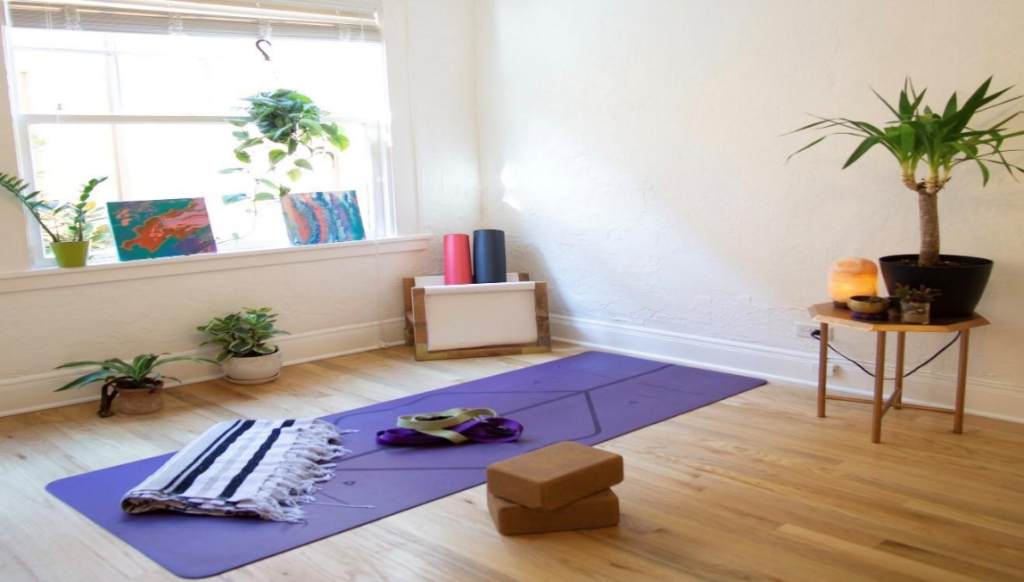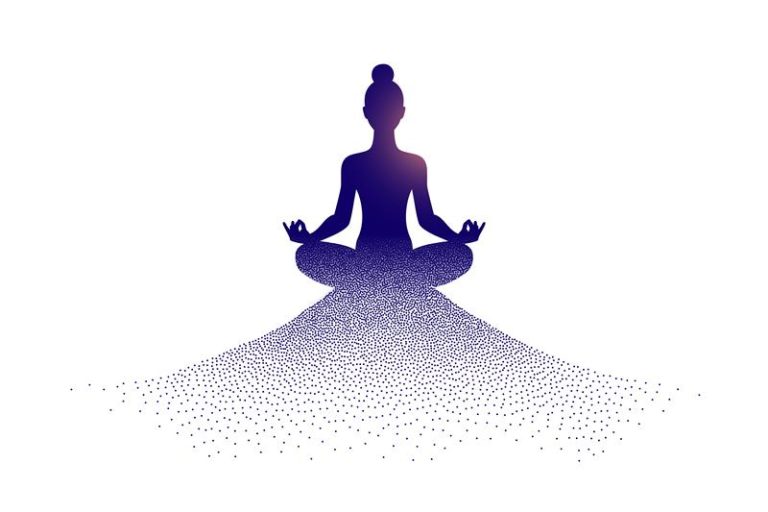With flexible schedules and growing digital access to classes, many people now explore yoga in the comfort of their own homes. While studios offer a communal experience, practicing yoga at home offers convenience, privacy, and freedom to move at your own pace. To make the most of your home sessions, it is helpful to create a space that supports concentration, calmness, and comfort.
Whether you are new to yoga or seeking to deepen your existing practice, the following tips can help you cultivate a peaceful and practical yoga environment at home.
Choose the Right Space
- Prioritize a Quiet Corner
Select an area of your home that receives minimal foot traffic and distractions. A quiet room or even a sectioned-off corner of your bedroom or living room can work well.
- Consider Natural Light and Ventilation
A space with natural light can enhance the overall ambiance, while good air flow contributes to comfort during longer sessions. If possible, position your mat near a window or sliding door.
- Ensure Ample Room to Move
Allow enough space for your mat and a little extra room on all sides so you can stretch out fully in all directions. Clear the surrounding area of furniture or sharp objects to ensure safety.
Set the Mood with the Right Ambiance
- Keep It Clean and Uncluttered
A tidy space can make it easier to focus. Remove any unnecessary items and consider storing your yoga props neatly in a basket or on a nearby shelf.
- Use Calming Colors and Decor
Neutral or earth-toned colors tend to evoke calm. You might consider decorating with simple artwork, natural elements (like plants or stones), or soft lighting to create a serene atmosphere.
- Add Gentle Lighting
Overhead lights can be harsh, so consider using lamps, candles, or string lights to create a softer, more relaxed glow, especially during evening sessions.

Introduce Pranayama
- Practice Simple Breathing Exercises
Begin with simple breathing exercises that involve slow, deep breathing. It takes practice to develop a smooth and flowing yogic breath, where you become aware of your natural breath, slowly and quietly.
- Focus Only on Your Breathing
Gradual, smooth, mindful breathing is the essence of yogic breathing. Breathe deeply, focusing on filling your lungs in three stages – expanding the lower abdomen, then the ribcage, and then the upper chest. Be aware of every stage of inhalation, exhalation, and everything in between.
Prepare Properly Before Practice
- Practice on an Empty/Near-Empty Stomach
An empty or light stomach makes it easy to do different postures, stretches, and movements. A light stomach can also prevent nausea or abdominal discomfort when doing yogic poses.
- Keep Yoga Wear Simple
Go for loose and comfortable clothing – they make it easy to stretch those wide stretches or any kind of movement, for that matter. Also, get rid of any jewelry when practicing and avoid heavy makeup.
- Warm Up Before Intense Yogic Postures
This is an absolute must! Intense and intricate yoga poses can strain or even injure muscles, joints, and connective tissue. Start by warming up by doing a few body stretches and/or simple yogic poses to bring about some flexibility, before getting down to the intense ones.
Gather Useful Props and Tools
- Invest in a Quality Yoga Mat
A comfortable, non-slip mat is a foundational tool. Choose one with appropriate thickness depending on the surface on which you are practicing.
- Keep Props Within Reach
Props like yoga blocks, a strap, a bolster, and a blanket can support better alignment and make postures more accessible. Having them nearby allows you to use them without interrupting your flow.
- Consider a Mirror
A mirror can help you observe your alignment, especially if you are practicing without a live instructor or video guidance. Use it as a gentle visual aid rather than a tool for self-judgment.
Use Sound to Enhance Focus
- Play Ambient Music or Nature Sounds
Soft instrumental music, nature recordings, or even traditional yoga chants can help create a more immersive experience. Make sure the volume is low enough not to distract from your breathing and movement.
- Use a White Noise Machine if Needed
If you are in a noisy environment, a white noise machine or sound-dampening app can help mask external sounds and support concentration.
Make It a Tech-Friendly Zone
- Set Up a Screen for Guided Sessions
If you are following online yoga videos, position your screen at eye level when seated or on all fours. This reduces neck strain and allows you to follow along comfortably.
- Use Wireless or Bluetooth Speakers
If your device’s audio is weak, a small speaker can enhance sound clarity without the need for high volume.
- Minimize Tech Distractions
Turn off non-essential notifications or set your device to “Do Not Disturb” mode during your practice to reduce interruptions.
Establish a Routine
- Choose a Consistent Time
Having dedicated time each day or week can support consistency. Whether it is morning, midday, or evening, try choosing a time that aligns with your natural energy levels.
- Start with Manageable Sessions
If you are just starting, short sessions of 15–30 minutes can be more sustainable. Over time, you can extend your practice as it fits your schedule.
- Use a Journal or Calendar
Some people find it helpful to track their yoga sessions. A calendar or journal can offer a gentle sense of structure and reflection.
Personal Touches That Inspire
- Create a Mini Altar or Intention Space
Without assigning spiritual meaning, this can simply be a small area with objects that inspire you, like a candle, a photo, a quote, or natural outdoor items.
- Incorporate Scent Mindfully
A light incense stick, essential oil diffuser, or scented candle (used safely and sparingly) may contribute to the sensory experience of your practice space.
Respect Your Space
- Maintain It Regularly
Clean your mat and props regularly and tidy up after each session. This can help reinforce the feeling that your space is intentional and respected.
- Make It Your Own
Your home yoga space should reflect your personality and preferences. Adjust as needed so that it feels welcoming and uniquely yours.
How Can We Help?
Creating a peaceful home yoga space does not require a lot of money or square footage, just thoughtful planning and a focus on comfort and calm. Whether you are practicing for flexibility, mindfulness, or movement, a well-designed space can support a more rewarding and focused experience.
Get in your zen space and make yoga part of your daily routine with personalized guidance from experts. Book a consultation with world-class certified yoga professionals at Get Well and Strong and embark on a journey towards holistic wellness.
DISCLAIMER: This blog is for general informational purposes only and does not constitute medical advice, diagnosis, or treatment. Always consult a certified healthcare provider for guidance tailored to your individual needs.




